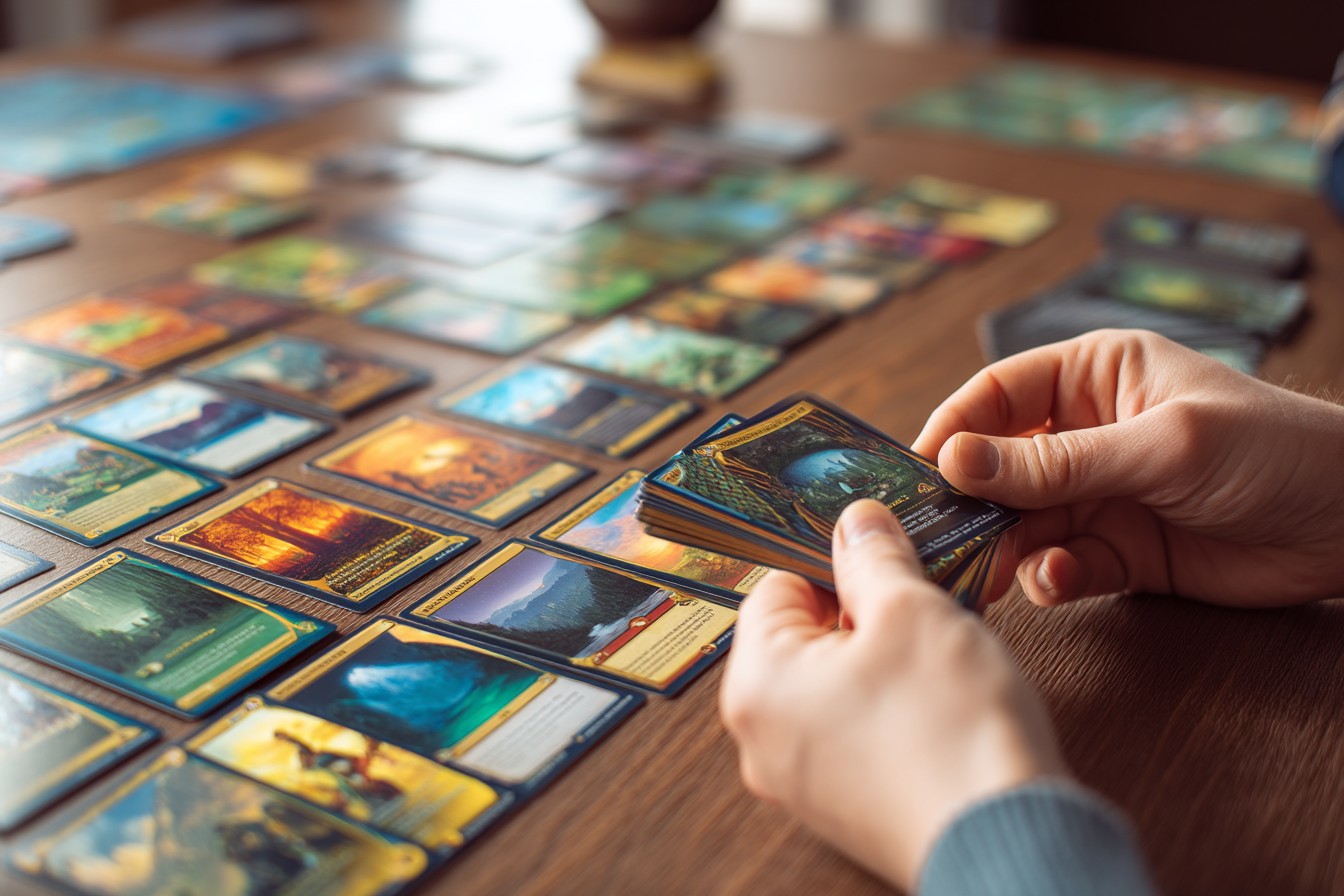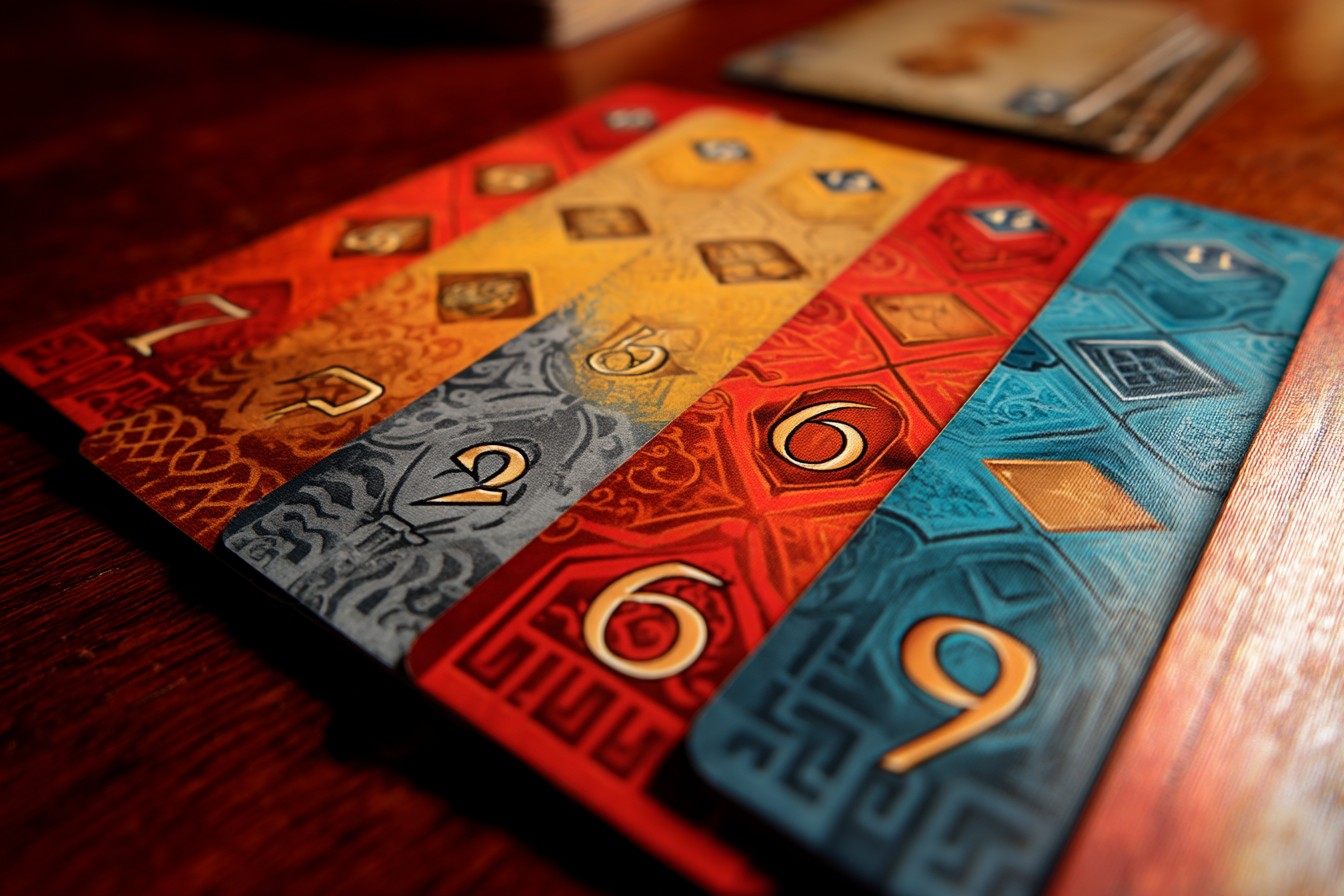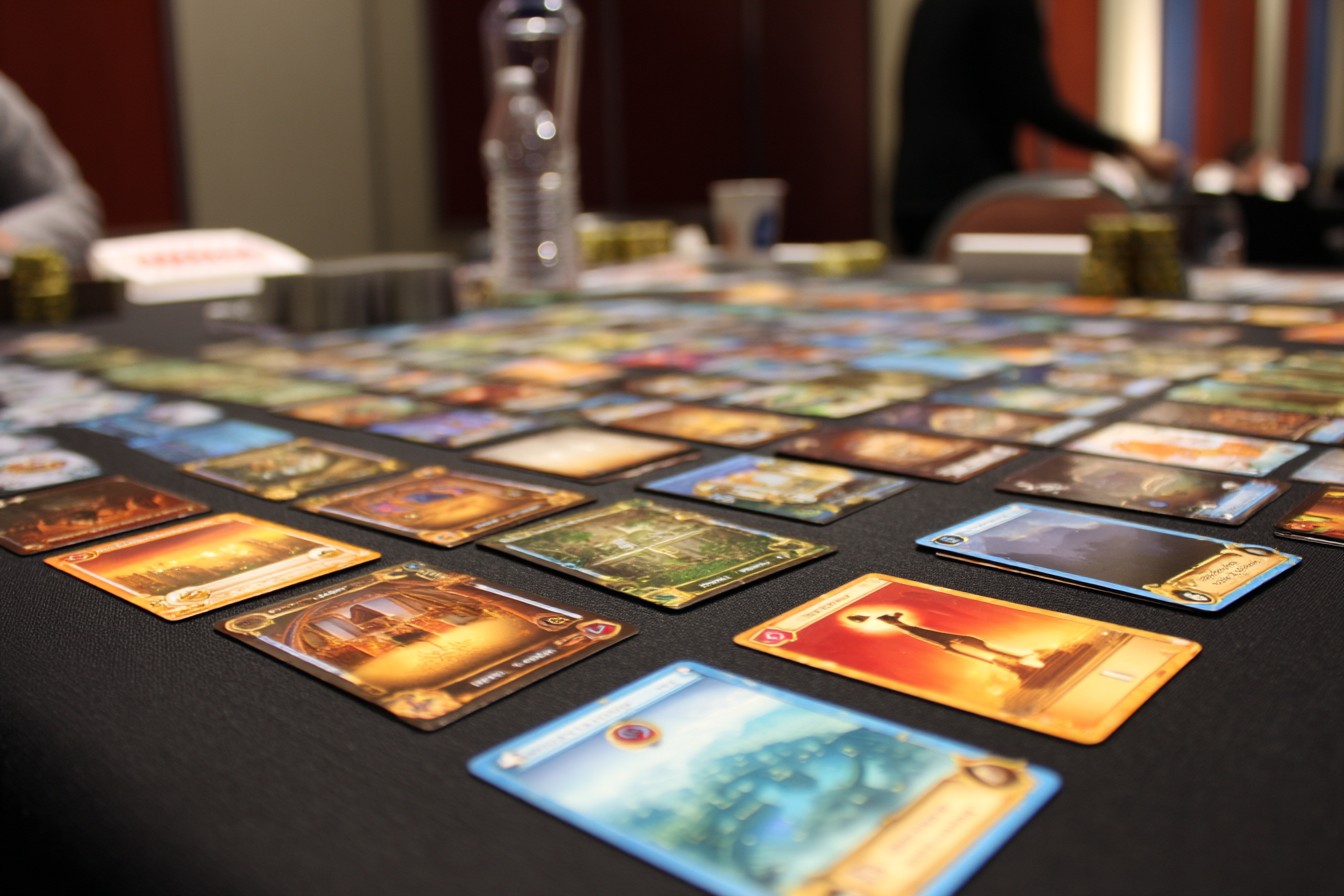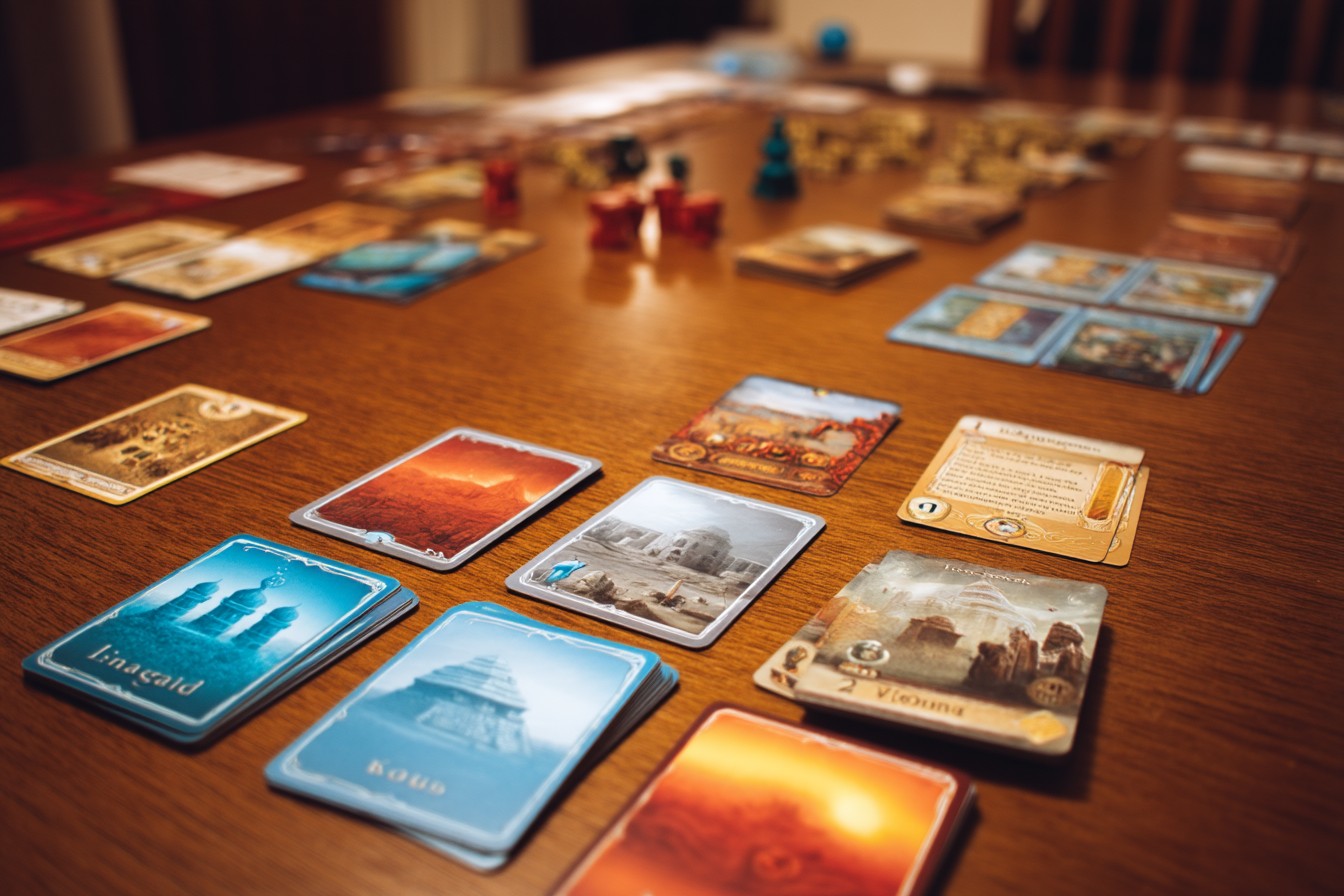I think it was somewhere around my fiftieth game of 7 Wonders when I first noticed the pattern. We were at Jeff’s place—the guy who always insists on using those ridiculous metal coins even though they make an ungodly racket whenever anyone touches the table. It was a six-player game, and I was sitting between my perpetually analysis-paralyzed friend Mark and Linda, who plays with frightening efficiency. I’d passed Linda a Glassworks in Age I that I couldn’t use, thinking nothing of it. Three rounds later, that same card somehow found its way back to me—exactly when I desperately needed glass for my Library.
That moment of serendipity made me wonder: was it luck, or was there something more predictable happening?
After tracking card movements across another 70+ games (yes, I keep notes—Linda says it’s “adorkable”), I’ve discovered that drafting in 7 Wonders isn’t just about selecting the best card for your current situation. It’s about reading the table, understanding player tendencies, and manipulating probability to your advantage. There’s a hidden rhythm to how cards move that, once you understand it, feels like having X-ray vision into other players’ strategies.
The first thing I started noticing was that different types of players create predictable “wake patterns” in the draft. The military-obsessed player will snatch red cards regardless of cost or synergy. The science collector grabs green with similar enthusiasm. But what about the cards they’re deliberately ignoring? Those create valuable streams of opportunity for the observant player.
Here’s a concrete example: in a six-player game, if you pass a resource card that costs 1 coin and nobody in the next two positions needs that resource, there’s roughly a 70% chance that card will come back to you in that same age. I’ve verified this repeatedly. The reasoning is simple but often overlooked—most players prioritize point-generating cards over basic resources, especially if they’d have to pay coins for those resources.
This insight completely changed how I approach Age I. Instead of grabbing every resource I need immediately, I now deliberately pass certain resource cards that I predict will wheel back to me, using my early picks instead on cards that definitely won’t return—typically military or instant-point civics that everyone values.
The players to your immediate left and right are obviously crucial, but understanding the tendencies of players two and three positions away is where the real drafting magic happens. In a typical seven-player game, the player three seats away from you creates what I call your “return current”—the stream of cards most likely to wheel back to you during an age.
My buddy Ryan is a perfect example of a predictable drafter. He has never, in 10+ years of playing, taken a military card in Age I. Not once. When I’m sitting three spots away from Ryan, I know with absolute certainty that if I pass a Shield (military card), it will never come back. However, I also know that Commerce cards (yellow) flow through him like they’re radioactive. This knowledge gives me incredible power to manipulate the draft.
One fascinating pattern I’ve observed is what I call “draft shadows.” Certain high-value cards create predictable behavior in their wake. For instance, when the Glassworks appears early in Age I, players often grab it immediately. This creates a shadow where the next 2-3 players are more likely to prioritize science cards that require glass. Understanding these shadows lets you predict what types of cards will be over-drafted or under-drafted in the next few rounds.
Age II adds another dimension to draft prediction. By this point, players have revealed their general strategies—the military player has red cards, the science player has green, and so on. This commitment creates what I call “strategy inertia,” where players become increasingly likely to grab cards that enhance their existing tableau and increasingly likely to pass cards that don’t fit.
This is where timing your selections becomes critical. If you notice three players pursuing science, you can predict with high confidence that Science Guild cards in Age III will be hotly contested. However, you can also predict that Trading Posts for scientific goods will be undervalued in Age II because science players typically focus on grabbing actual science cards, not commerce.
Linda figured this out years ago. She’s mastered what she calls her “invisible resource strategy,” where she deliberately avoids showing resource production cards in her tableau and instead relies on commercial cards that provide resource trading discounts. Other players often overlook these yellow cards because they’re not directly producing points, but they provide incredible flexibility through the endgame.
The most powerful draft manipulation technique I’ve discovered involves what I call “strategic misinformation.” In Ages I and II, I’ll occasionally select a card that suggests I’m pursuing a strategy I have no intention of following. For example, I might grab an early military card and place it prominently, leading other players to believe I’m contesting military. This often causes players to my left to prioritize military cards out of defensive fear, which predictably changes which cards wheel back to me.
During a tournament in Madison three years ago (yes, there are 7 Wonders tournaments, and yes, I’m exactly the kind of person who attends them), I won a crucial game by exploiting this technique. I took a first-pick Academy in Age I, suggesting heavy science investment. The player to my left panicked and started grabbing every science card he could, even ones that didn’t synergize well with his wonder. Meanwhile, I quietly pivoted to a civic/blue card strategy, collecting perfectly synergized culture buildings while he wasted picks defending against a scientific assault that never materialized.
The physical positioning of cards in your tableau also influences drafting patterns more than most players realize. When I place resource cards prominently at the front of my display, opponents are less likely to pass me cards that require those resources. Conversely, if I tuck those cards slightly behind others, players making quick visual scans of the table often miss them and pass me cards assuming I lack the resources to build them.
In Age III, the guild cards introduce a fascinating psychological element to drafting. Because guild scoring depends on what other players have built, you get this beautiful recursive pattern where optimal picks depend on predicting what others predict you will predict they will do. It’s like a game of drafting poker.
My favorite Age III pattern involves what I call the “defensive guild pass.” When I receive a guild that would score extremely well for the player to my left (like the Philosophers Guild when they’ve been collecting science), I’ll often pass it clockwise—even if it’s moderately valuable to me—because the player to my right is statistically unlikely to select a card that primarily benefits someone they can’t see. This keeps powerful scoring engines out of the hands of my direct competitor.
I’ve been tracking these patterns with increasingly detailed notes since 2014, and the predictive accuracy has become almost uncanny. In a recent game night with our regular group, I correctly predicted 11 of the 14 cards that wheeled back to me across all three ages. My friend Jason accused me of marking the cards. I wasn’t—I just understand the invisible currents of the draft.
The player count dramatically changes these patterns, too. In a three-player game, nearly half the cards will wheel back to you in each age. This makes draft reading even more crucial, as you’re essentially selecting your hand twice. The cards you pass in early rounds become your late-round options. In seven-player games, by contrast, very few cards wheel back, making each selection more critical and the draft patterns more about reading the collective tendencies of the group.
Temperature and alcohol consumption also affect drafting patterns, believe it or not. In our summer outdoor games, players select significantly faster and make more intuitive choices, leading to more predictable draft patterns. In winter indoor games, especially after Jeff breaks out the good whiskey, decision time increases and selections become more erratic. I’ve learned to adjust my predictions accordingly.
Here’s my practical advice for anyone looking to improve their 7 Wonders drafting: start by studying the tendencies of the players immediately around you. Which card types do they consistently prioritize? Which do they habitually pass? Then expand your awareness to the players two and three positions away, focusing on their patterns rather than individual card selections. Finally, practice making conscious predictions about which cards might wheel back to you, and check your accuracy after each round.
One last observation that’s served me well: most players dramatically overvalue cards that produce immediate points and undervalue cards that enable future synergies. This creates a repeatable pattern where enabling cards—resources, commerce, and occasional sciences—wheel much more frequently than you might expect based on their actual value.
After hundreds of games across a decade of play, I’ve come to believe that 7 Wonders is less about selecting the best card from each hand and more about manipulating the draft to create the best possible hands for yourself in later rounds. The true game isn’t played on the table—it’s played in the invisible currents of cardboard flowing between players.
And that’s why it remains in my top five games of all time, despite being relatively simple compared to the heavy Euro games that typically dominate my shelves. Each new player adds a different drafting pattern to learn, a different current to navigate. Maybe that’s why Linda insists we teach it to every new couple we meet—she gets to watch me silently count cards and predict patterns instead of making appropriate dinner conversation.
I can’t help it though. Once you start seeing the patterns, you can’t unsee them.





Leave a Reply